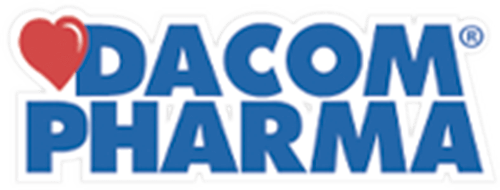Like humans, your pets can suffer from musculoskeletal problems. Visible symptoms of these problems include distinct limping on the front and hind legs. But lameness is often the last stage and is preceded by hidden symptoms.
A common cause of musculoskeletal problems in animals is collagen deficiency. This defect can occur at any time during the life of the animal. As with young children, collagen deficiency causes movement problems in adult animals.
Why is collagen important?
Collagen is an important component of joint nutrition. Approximately 80% of collagen in the body is type I collagen. It is the basis of bones, tendons, cartilage and other parts of the musculoskeletal system of animals. Collagen and its other components lubricate articular cartilage and locomotor tissues. At the same time, they dampen shocks during movement and prevent wear and tear of cartilage, which is a common cause of lameness.
Simply put, the better the collagen equipment, the better the quality of the cartilage in the animal’s body. Sufficient amount of collagen in the body it also has a positive effect on the quality of animal fur and helps the proper formation of the horn of the horse’s hooves. Thanks to these properties, breeders use collagen especially in the prevention of problems with the musculoskeletal system.
Colafit as a solution to problems
Colafit is made of crystalline type I collagen. It is formed by lyophilisation and all amino acids remain present during its preparation. Thanks to this preparation, collagen is properly absorbed into the animal’s body.
We offer Colafit in several variants carefully compiled for different age groups and breeds of dogs and cats. In addition, it has a positive effect on pregnancy and lactation in bitches and cats. Preparation easy to combine with regular feed .
Other active substances
MSM (methylsulfonylmethane)
- An indispensable source of sulfur in immune and regenerative processes
- MSM is recommended as an aid in inflammatory joint diseases
- Reducing inflammation in turn leads to a reduction in pain
Chondroitin sulfate and glucosamine
- They represent natural components of cartilage and connective tissues
- For analgesic and anti-inflammatory effect, they are classified as SYSADOA
- They are used to stop further destruction and loss of articular cartilage
- They reduce the activity of enzymes that degrade the intercellular mass of cartilage
Vitamin C
- It affects the health of bones, cartilage and gums
- Strengthens the immune system
- It helps the function of the nervous system
Hyarulonic acid
- Lubricates joints and absorbs shocks
- Maintains the flexibility of articular cartilage
Taurine
- It affects the nervous system
- It works against cramps
- Prevents vision problems in cats
Biotin and beta-carotene
- They affect the health of the coat
- Ideal accessories for colorful breeds
- Emphasizes the contrast of coat colors and tan characters
Difference between native collagen and hydrolyzed (collagen peptides)
The main difference is in their different fate in the organism, and thus in their different biological effects. Collagen preparations that are on the market in our country can be very simply divided into two large groups: gelatins and preparations containing hydrolyzed collagens, ie rather collagen peptides, and those that contain native collagens. Both types of substances have different properties, different purpose of administration, diametrically different dosage
Gelatins and collagen peptides fall into the category of joint nutrition, but native collagens act completely differently in the body. Their spell is called inducing, or, restoring, oral tolerance. The point is that small doses of antigen, in this case native collagen, given orally, come into contact with and activate the cells of the lymphatic tissue in the gut, which, through such a small cascade of other substances, results in tolerance to that antigen throughout the body. If the organism had previously fought against such an antigen and destroyed it, it will now stop. Or at least the fight will subside.
This is how only native collagen works. Collagen is a large molecule, in its natural state twisted into a triple helix and connected into fibrils and fibers, or into networks, in addition permeated and enveloped by sugar and water molecules. It is difficult to keep it in this state during production. In the body, it must then pass through the stomach, resist acids and enzymes and reach the lymphatic tissue in the small intestine unharmed. Fortunately, it is the natural, native structure that helps her. Paradoxically, being less digestible will help native collagen get where it is.
Unfortunately, gelatin or collagen peptides cannot restore oral tolerance. The substance that is to induce it must retain its full antigenicity until it comes into contact with GALT cells (lymphatic tissue in the gut). And to do that, it needs to be complete and in a natural state. Otherwise, the immune system will not recognize her.
Oral tolerance is not new. Its concept was formulated at the end of the 70 ‘s. years, has been intensively studied since at least the 90s. One of the leading laboratories investigating oral tolerance is based at Harvard; studies are published in journals of prestigious publishers, such as John Wiley & Sons. When you enter the term “oral tolerance induction” in PubMed, you will get almost 1,700 studies. About two hundred of them are about collagen. Oral tolerance is a great challenge for scientific research, mainly because it is a completely physiological, non-toxic and safe principle.
The difference is also in the daily doses. Collagen peptides are a source of raw materials for the production of their own proteins, including collagens. They are given in daily doses of about 3 to 10 grams, so that the body simply has enough at hand. We can also get a fairly decent dose of collagen, of course thermally degraded, from food. There is about 1 gram of collagen in 100 grams of the most popular pork, 2 grams in the belly, over 10 grams in boiled pork skin. There is more of it in beef – in the least overgrown about 1.5 grams, in the more tallow about 5 grams. The worst is chicken – there is just over half a gram of collagen in the breast cuttings, in the breasts with the skin about twice as much. However, food intake has its disadvantages – pork is fatty, beef is expensive, we would have to eat meat daily and so on. So that classic joint nutrition can be an acceptable compromise. But again: we are talking about grams; a product with a collagen content of 20 milligrams cannot really be considered effective joint nutrition.
The role of native collagens is not to nourish, but to get into the intestine and there to restore oral tolerance to collagen. Really small amounts are enough for this. Different doses have been tried, and even found to have different effects, but oral tolerance appears to be induced by doses in micrograms. And that’s about the amount we see in native collagen preparations. But one thing is certain: the doses of native and hydrolyzed collagens cannot be directly compared, we would mix pears with apples. Otherwise, we hardly encounter native collagens in our diet – perhaps only in steak tartare, but there is mainly collagen I.
All Colafit VET products contain a unique crystalline native collagen type I. The patent removes telopeptides and creates a pure form of collagen of 99.99 %, purity, called atelocollagen. Our collagens are simply different. They are more difficult to obtain, are used in different doses, and benefit by a different mechanism.
Clinically tested!
Clinical studies confirm the effectiveness of collagen after only 3 months of use. 70% of the animals were complete or almost complete complete elimination of lameness and musculoskeletal problems. In 30% of the animals in the clinical study, there was a significant improvement in animal problems.
Think of the comfort of your pets as yours and give them quality and healthy movement.









